Table of Content
1. Honda VTX 1800 Vs. Kawasaki Vulcan 2000
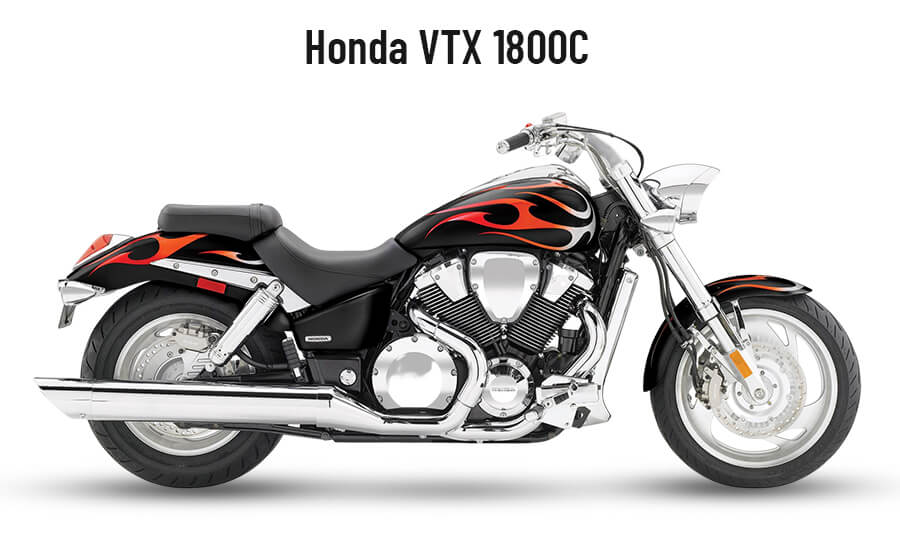
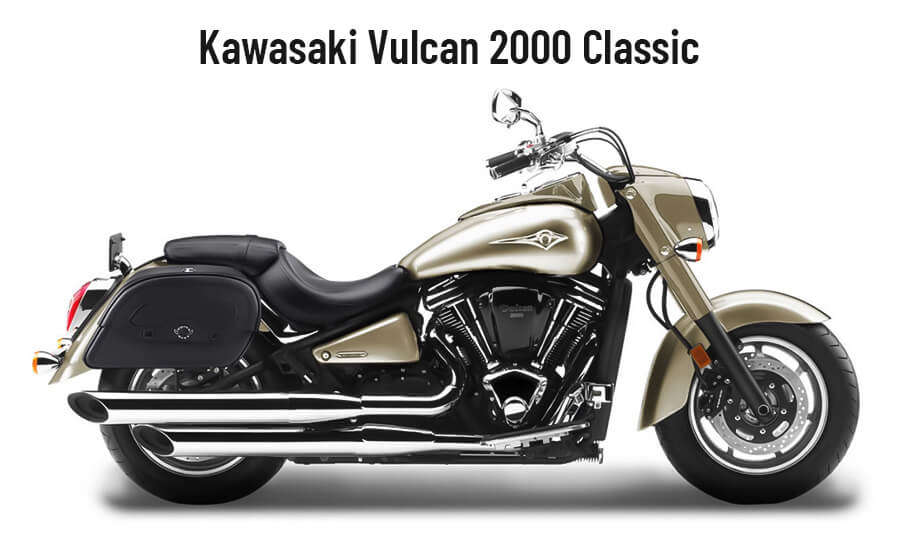
“Sometimes, it’s better to travel than to arrive.”
Motorcycle riding is not only about reaching a destination, it is also about enjoying the journey. A motorcycle is an affordable means of transportation for most people. However, if you have been on a long-distance ride or a motorcycle tour, you know that a motorcycle can be more than a necessity.
Nowadays, most high-performance and high-quality motorcycles have become quite expensive. However, if you are looking for reliable, high-performance, and budget-friendly older motorbikes, the Honda VTX 1800 and the Kawasaki Vulcan 2000 are good options. Honda and Kawasaki are two highly-trusted Japanese motorcycle brands. Honda and Kawasaki's motorbikes have the reliable build quality, low failure rates, and good resale values. The Honda VTX 1800 and the Kawasaki Vulcan 1800 also have a good reputation among custom builders due to how easy they are to customize.
Inspired by the Honda Zodia concept displayed at the 1995 Tokyo Motor Show, the Honda VTX 1800 was introduced in 2000. It became the largest V-Twin engine motorbike of its time, but that honor was short-lived when Kawasaki launched the Vulcan 2000 in 2004.
The Honda VTX 1800 and the Kawasaki Vulcan 2000 are classic cruisers with fuel tank-mounted gauges, separate dual chrome mufflers, a liquid-cooling system, and are capable of two-up riding. However, the Kawasaki Vulcan 2000 can carry more weight due to being fitted with a bigger and more powerful engine. Meanwhile, the Honda VTX 1800 has better agility and handling. This article is a detailed comparison between the Honda VTX 1800 and the Kawasaki Vulcan 2000.
2. Detailed Specs Comparison: Honda VTX 1800 Vs. Kawasaki Vulcan 2000
| 2008 Honda VTX 1800 | 2010 Kawasaki Vulcan 2000 | |
|---|---|---|
| Identification | ||
| Honda | Maker | Kawasaki |
| VTX 1800 | Model | Vulcan 2000 Classic |
| 2008 | Year Model | 2010 |
| Custom / Cruiser | Motorcycle Type | Custom / Cruiser |
| VTX 1800 | Model ID | VN2000 |
| $13,699 (VTX 1800N) $15,499 (VTX 1800F) |
Base Price | $14,599 |
| Engine and Performance | ||
| 1,795 cc | Displacement | 2,053 cc |
| Four-Stroke, 52° V-Twin Engine | Engine Design and Type | Four-Stroke, 52° V-Twin Engine |
| Water-Cooled | Cooling System | Water-Cooled |
| Two | No. of Cylinders | Two |
| Four | Valves Per Cylinder | Four |
| 101 hp at 5,000 rpm | Horsepower | 103.33 hp at 4,800 rpm |
| 159 Nm at 3,000 | Torque | 191.2 Nm at 2,800 rpm |
| 112 mm / 4.41 in | Stroke | 123.2 mm / 4.9 in |
| 101 mm / 3.98 in | Bore |
103 mm / 4.1 in |
| Programmed Fuel Injection (PGM-FI) with Automatic Choke | Fuel Injection System | Digital Fuel Injection with Dual 46 mm Keihin Throttle Bodies |
| 9:1 | Compression Ratio | 9.5:1 |
| Five-Speed | Transmission | Five-Speed |
| Shaft | Final Drive | Belt |
| Eight-Plate Hydraulic Clutch | Clutch | Wet, Multiple Discs, Cable Operated |
| 42 mpg | Fuel Economy | 41.3 mpg |
| Chrome, Separate Dual Mufflers | Muffler | Chrome Separate Dual Slash Cut Mufflers |
| Two-Into-Two, Separate Exhaust Pipes | Exhaust | Two-Into-Two Exhaust Pipes |
| Steel Tubular Cradle | Frame | Steel, double-cradle with box-section single-tube backbone |
| Electric | Starter | Electric |
| Wheels | ||
| Aggressive, 10-Spoke Racing-Type Cast Wheels | Wheels | Seven-Spoke, 16 inches Cast Aluminum Wheels |
| Front: 130 / 70 R18 R Rear: 180 / 70 R16 R |
Tires | Front: 150/80-16 Radial Rear: 200/60-16 Radial |
| Braking | ||
| Dual Discs with Linked Braking System (LBS), Three-Piston Calipers | Front | 300 mm Double Disc |
| Single Disc with LBS, Two-Piston Caliper | Rear | 320 mm Single Disc |
| No | ABS | No |
| Suspension | ||
| 45 mm Cartridge Inverted Fork | Front | 49 mm Telescopic Fork |
| Swingarm, Dual Shocks with Adjustable Preload | Rear | Spring Preload, Fully Adjustable Mono-Shock Absorber |
| 130 mm / 5.1 in 110 mm / 4.3 in (Type F) |
Front Wheel Travel | 5.9 in |
| 99 mm / 3.9 in | Rear Wheel Travel | 3.9 in |
| Dimensions and Weight | ||
| VTX 1800C: 5.80 in / 147 mm VTX 1800R, VTX 1800N, VTX 1800S, VTX 1800T: 6.40 in / 163 mm VTX 1800F:5.70 in (145 mm) |
Trail | 7.2 in / 183 mm |
| VTX 1800C: 32° VTX 1800R, VTX 1800N, VTX 1800S, VTX 1800T: 32° VTX 1800F: 31°45' |
Rake | 32° |
| 4.8 gal | Fuel Tank Capacity | 5.5 gal |
| VTX 1800S / VTX 1800R: 140 mm / 5.5 in VTX 1800C / VTX 1800F: 130 mm / 5.1 in |
Ground Clearance | 135 mm / 5.3 in |
| VTX 1800S / VTX 1800R: 990 mm / 39.0 in VTX 1800C: 930 mm / 36.6 in |
Width | 1026 mm / 40.4 in |
| VTX 1800S / VTX 1800R: 1,155 mm / 45.5 in VTX 1800C: 1,125 mm / 44.3 in VTX 1800F: 1,130 mm / 44.5 in |
Height | 1156 mm / 45.5 in |
| VTX 1800S / VTX 1800R: 2,630 mm / 103.5 in VTX 1800C: 2,455 mm / 96.7 in VTX 1800F: 2,420 mm / 95.3 in |
Length |
2535 mm / 99.8 in |
| 696–709 mm / 27.40–27.90 in | Seat Height | 681 mm / 26.8 in |
| 1,710 mm / 67.5 in | Wheelbase |
1735 mm / 68.3 in |
|
774–804 lbs / 351–365 kg |
Wet Weight | 837.9 lbs / 380.1 kg |
3. Design: Honda VTX 1800 Vs. Kawasaki Vulcan 2000
3.1 Design: Honda VTX 1800
The Honda VTX 1800 has an old-school look with a compact and streamlined design. It has a minimalist styling with both blacked-out and chrome finishing. The Honda VTX 1800 has a blacked-out frame, radiator, and engine fins. The chrome parts include the front fork, handlebars, separate dual exhaust pipes, air filters, and cylinder heads. The Honda VTX 1800 has a round headlamp fitted inside a vintage-style chrome nacelle. It is also fitted with an aggressive-style seat capable of two-up riding with lower-back support for the rider. The Honda VTX 1800 has a slightly raked-out front end with a wheelbase of 67.5 inches. The gauges are mounted to a broad fuel tank, having a capacity of 4.8 gal. The pulled-back handlebars with midsize risers have chrome side mirrors. The Honda VTX 1800C comes with a bobber-style front fender and a slightly high-mounted, chopped rear fender giving a full view of the aggressive racing-type, cast aluminum wheels.
The Honda VTX 1800 lineup has several variants, including the VTX 1800C, VTX 1800R, VTX 1800N, VTX 1800F, VTX 1800S, and VTX 1800T. The Honda VTX 1800C was easily identifiable due to its two-into-one exhaust pipe and handlebar-mounted gauges. Meanwhile, the Honda VTX 1800T was fitted with a stock windscreen, saddlebags, and a passenger backrest for comfortable long-distance rides.
3.2 Design: Kawasaki Vulcan 2000
The Kawasaki Vulcan 2000 is built with an ideal cruiser design and a stylish front end. It has a chrome headlight with an extended bug-eye nacelle attached to its wider front fork. The Kawasaki Vulcan 2000 comes with wide, buckhorn handlebars with chrome side mirrors. The gauges are mounted to the teardrop-shaped fuel tank with the Vulcan logo on both sides. The Kawasaki Vulcan 2000 is fitted with a comfortable two-piece saddle capable of two-up riding. The tuck-and-roll rider’s seat also provides small back support for the rider.
The Kawasaki Vulcan 2000 has black and chrome finishing. The blacked-out engine has separate dual slash-cut chrome exhaust pipes. The Kawasaki Vulcan 2000 has average-sized, chopped front and rear fenders, providing a full view of the stylish seven-spoke, 16-inch cast aluminum wheels.
4. Engine and Performance: Honda VTX 1800 Vs. Kawasaki Vulcan 2000
4.1 Engine and Performance: Honda VTX 1800
After working on underperforming V-Twin engines for several years, Honda decided to build the largest displacement V-Twin engine motorbike with a bold, muscular look and a low center of gravity. The Honda VTX 1800 is powered by a 1,795 cc liquid-cooled, four-stroke, 52° V-Twin engine capable of a torque of 159 Nm at 3,000 rpm and a horsepower of 101 hp at 5,000 rpm. The rear wheel is connected to the five-speed gearbox via a shaft drive, giving a cleaner look and smoother riding quality. Despite being an older model, the Honda VTX 1800 is fitted with a programmed fuel injection (PGM-FI) system that provides a controlled delivery of fuel to the engine and a fuel consumption of 42 mpg. To satisfy emission standards, it is also equipped with an emission control system with a catalytic converter and air injection to reduce the amount of carbon monoxide and hydrocarbons released. The undesired vibrations produced by the large V-Twin engine have been reduced by the offset dual-pin crankshaft and dual counterbalancers.
For reliable braking, the Honda VTX 1800 was fitted with dual front discs and a single rear disc, along with a Linked Braking System (LBS). The LBS allows the rider to apply both the front and rear brakes with a single action. The Honda VTX 1800’s 45 mm Cartridge inverted fork and preload adjustable, dual rear shock absorbers have adequate wheel travel distance to ensure a comfortable riding experience on smooth and bumpy roads.
4.2 Engine and Performance: Kawasaki Vulcan 2000
In 2004, Kawasaki produced a motorcycle with a more powerful and bigger V-Twin engine than the Honda VTX 1800 known as the Kawasaki Vulcan 2000. The Vulcan 2000’s 2,053 cc liquid-cooled, V-Twin engine is capable of a horsepower of 103.33 hp at 4,800 rpm and a torque of 191.2 Nm at 2,800 rpm. Like the Honda VTX 1800, it also lacks a sixth gear to ensure a better cruising and touring experience. The Kawasaki Vulcan 2000 is equipped with dual 46 mm Keihin throttle bodies, a digital fuel injection for optimized fuel economy, and an electronic engine control unit (ECU) to meet emission standards. The V-Twin engine has a long-stroke design providing better low-end torque and horsepower. The Kawasaki Vulcan 2000 has twin cams in the crankcase and a 35° valve angle which gives it a lower overall height and center of gravity.
The Kawasaki Vulcan 2000 is fitted with a 49 mm telescopic front fork and a fully adjustable rear mono-shock absorber for comfortable rides on paved and uneven roads. It also has 300 mm dual front discs and a 320 mm single rear disc to ensure reliable braking.
5. Comfort and Ergonomics: Honda VTX 1800 Vs. Kawasaki Vulcan 2000
5.1 Comfort and Ergonomics: Honda VTX 1800
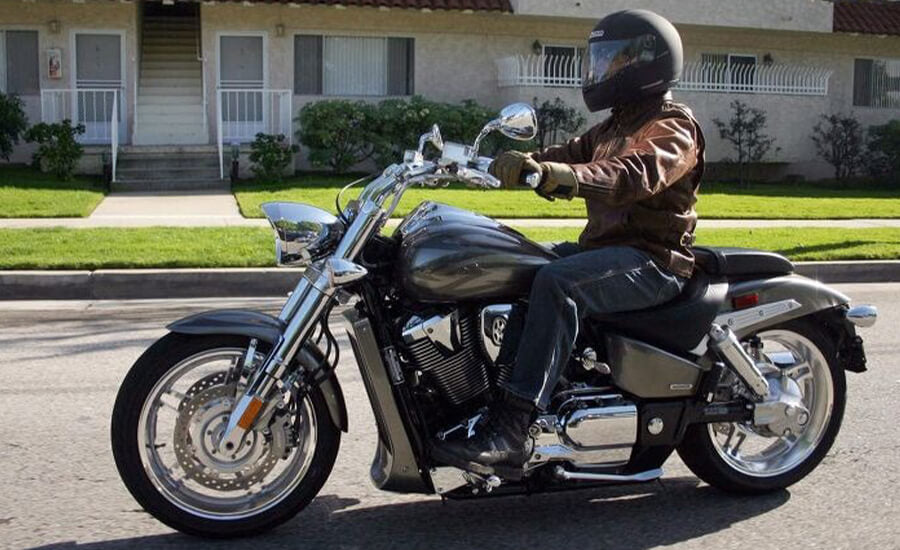
The Honda VTX 1800 has ideal cruiser ergonomics, forward-mounted foot controls, a low seat height, and pulled-back handlebars with midsize risers. It is comfortable for both average and taller riders due to its adequate legroom. The handlebars position and rider’s seat position ensure a relaxed, upright back position. Overall, the Honda VTX 1800 is comfortable for city travel and cruising on open roads and highways. However, a shorter rider has to sit slightly forward to comfortably reach the handlebars.
5.2 Comfort and Ergonomics: Kawasaki Vulcan 2000
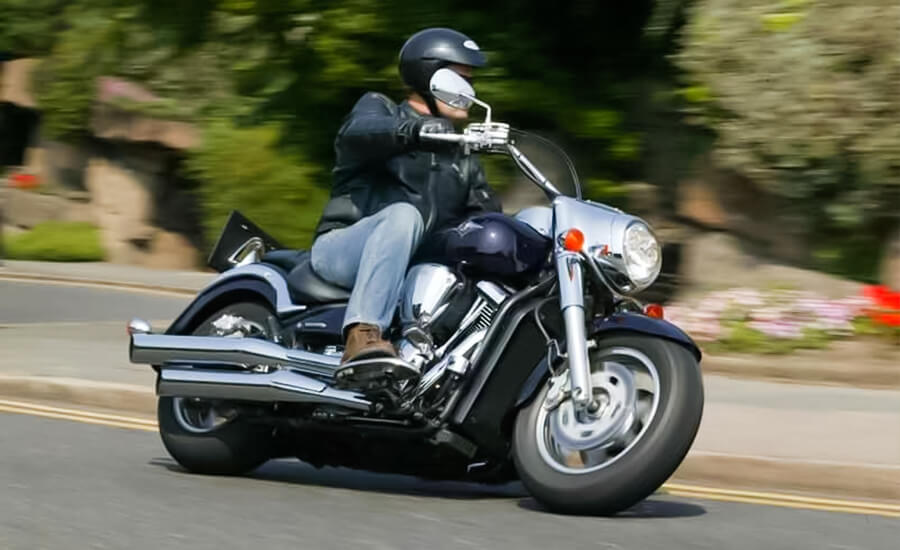
The Kawasaki Vulcan 2000 has more comfortable ergonomics than the Honda VTX 1800 due to its low-mounted, swept-back, buckhorn handlebars. The Kawasaki Vulcan 1800 has a low seat height of 26.8 inches and forward-mounted floorboards to ensure a comfortable touring experience. The adequate legroom stretched riding position, and floorboards make continuous long-distance rides comfortable. The stock tuck-and-roll rider’s seat is also quite comfortable. However, for comfortable two-up riding, the stock passenger seat would have to be replaced with a more cushioned seat. The Kawasaki Vulcan 2000 can be transformed into an ideal touring bike if fitted with a few aftermarket parts, including a large windscreen, saddlebags, and backrests.
6. Pros and Cons: Honda VTX 1800 Vs. Kawasaki Vulcan 2000
6.1 Pros and Cons: Honda VTX 1800
| Honda VTX 1800 Pros | Honda VTX 1800 Cons |
|---|---|
| Streamlined design | No ABS option |
| Classic cruiser look | Loose battery terminals |
| Chrome finish | Premature wear and tear |
| Chopper-style front end | Faulty speedometer |
| Twin-counterbalancers | Headlamp vibrates |
| Standard linked braking system (LBS) | No sixth gear |
| Programmed fuel injection system |
6.2 Pros and Cons: Kawasaki Vulcan 2000
| Kawasaki Vulcan 2000 Pros | Kawasaki Vulcan 2000 Cons |
|---|---|
| Powerful bike | No ABS option |
| Unique bug-eye headlight nacelle | Overheating |
| Large fuel tank capacity | Engine stalls |
| Low seat height | Battery problems |
| Low center of gravity | Ignition switch failure |
| Comfortable for long-distance rides | Oil leaks |
| Stretched riding position |
7. Frequently Asked Questions (FAQs)
7.1 How Fast is the Kawasaki Vulcan 2000?
The Kawasaki Vulcan 2000 is fitted with a large V-Twin engine, five-speed transmission, and a belt drive. Due to being fitted with high-power specs, the Kawasaki Vulcan 2000 can attain a top speed of 125 mpg and can accelerate from 0-60 mph in only 3.95 sec.
7.2 Is the Honda VTX 1800 Reliable?
The Honda VTX 1800 is a popular motorbike among motorcycle enthusiasts due to its reliability. If it is well-maintained, stored, and ridden correctly, the Honda VTX 1800 can last more than 18 years or 75,000 miles.
7.3 What are the Key Differences between the Honda VTX 1800 and the Kawasaki Vulcan 2000?
| Key Differences between the Honda VTX 1800 and the Kawasaki Vulcan 2000 | |
|---|---|
| Honda VTX 1800 | Kawasaki Vulcan 2000 |
| 1,795 cc | 2,053 cc |
| Less powerful and torquey engine | More powerful and torquey engine |
| Shaft drive | Belt drive |
| Small fuel tank capacity | Large fuel tank capacity |
| Normal seat height | Low seat height |
| Upright back position | Relaxed riding position |
| No floorboards | Stock floorboards |
| Old-school headlight nacelle | Bug-eye headlight nacelle |
| Simple mufflers | Slash-cut mufflers |
| Midsize engine stoke | Long engine’s stoke |
8. Which is Better: the Honda VTX 1800 or the Kawasaki Vulcan 2000?
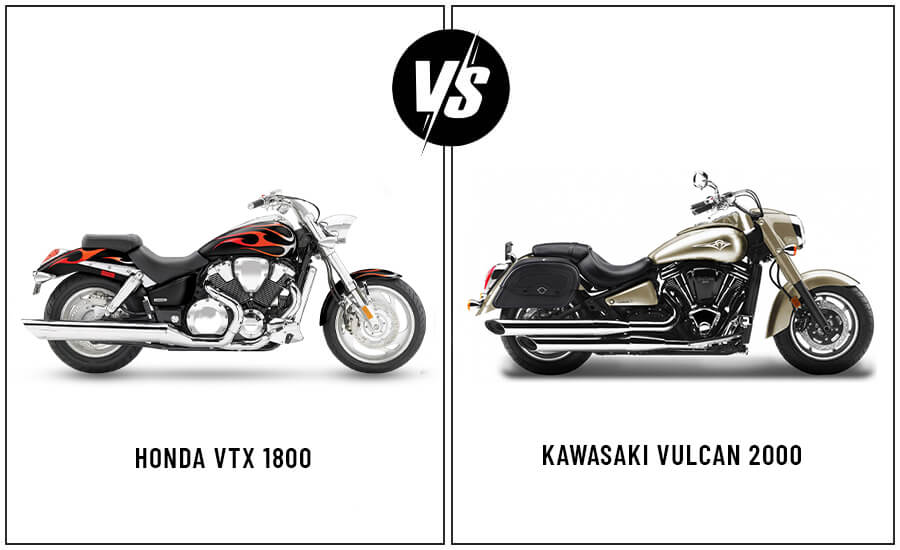
The Honda VTX 1800 and the Kawasaki Vulcan 2000 are old-fashioned and reliable cruisers with large displacement V-Twin engines. Both motorcycles ensure good handling and are ideal for daily commutes and highway cruising. The Honda VTX 1800 and the Kawasaki Vulcan 2000’s engines produce low-end torque and power for comfortable two-up riding. However, the Honda VTX is more agile and handles well while turning corners due to being a lightweight cruiser with a streamlined design. Meanwhile, the Kawasaki Vulcan has better ergonomics than the Honda VTX 1800. It is ideal for continuous long-distance rides and cruising at highway speeds.

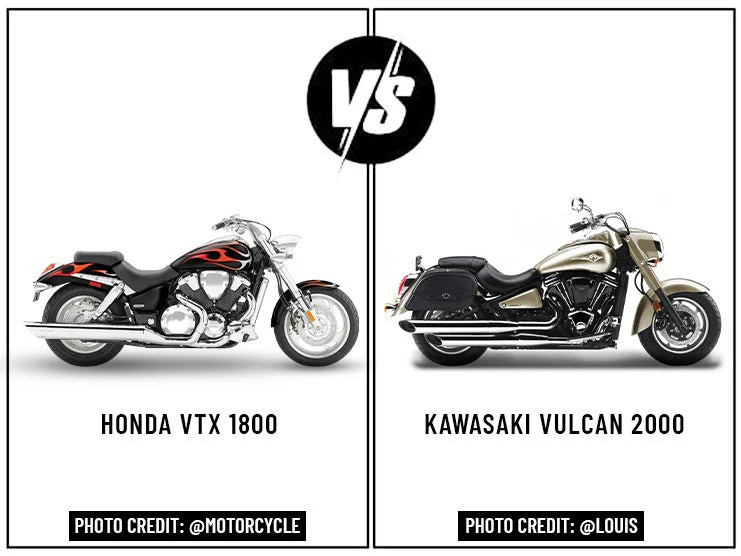











Leave a comment
All comments are moderated before being published.
This site is protected by hCaptcha and the hCaptcha Privacy Policy and Terms of Service apply.